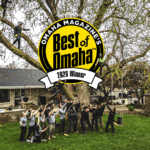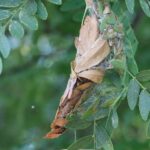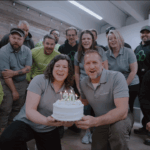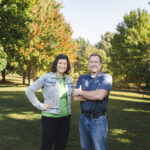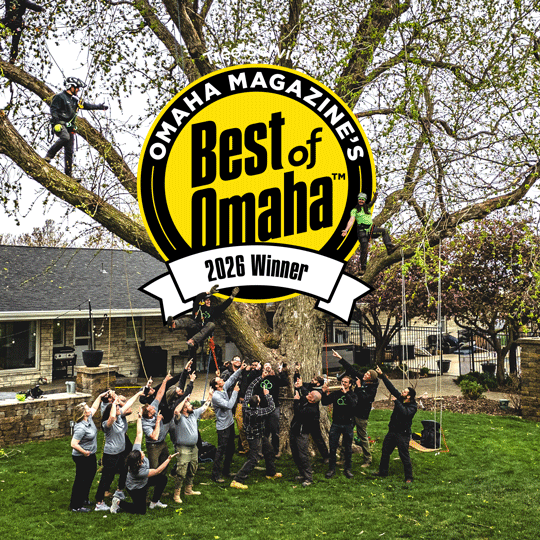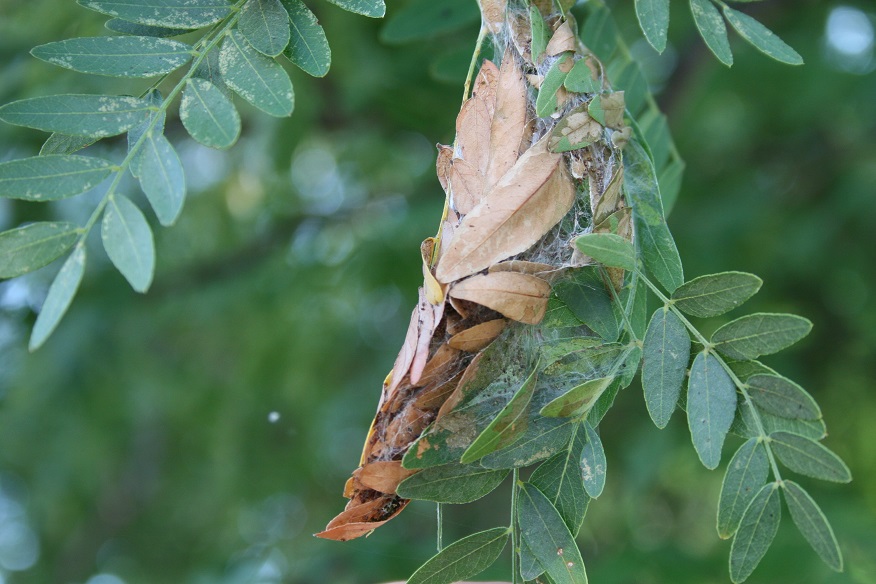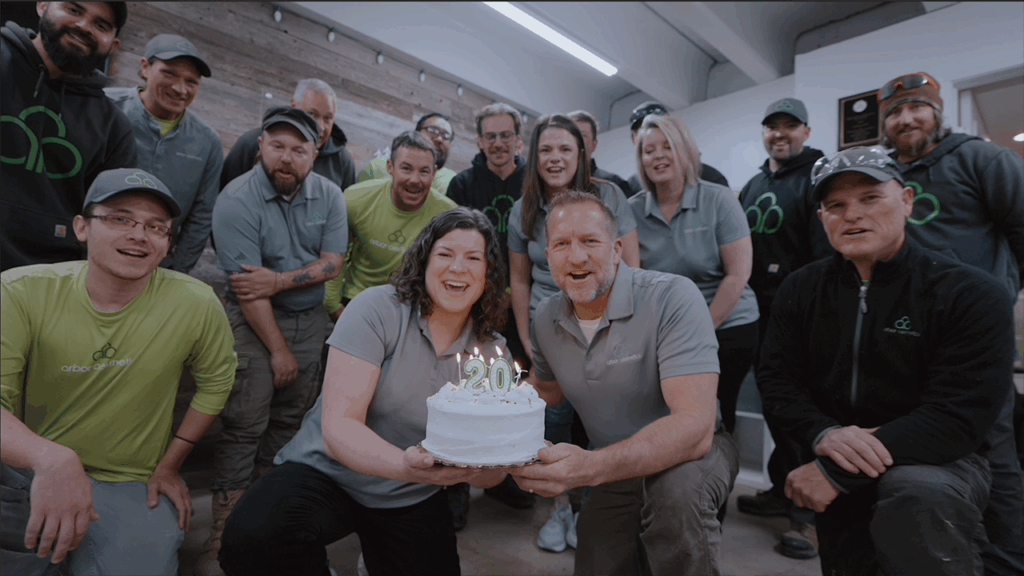I sat in on a great presentation about proper pruning technique last week at a local tree care conference. Of course, in order to understand proper pruning, you first need to understand how and why trees grow the way they grow. Without getting too heavy into science and technical terms, let’s just say that “apical dominance” is what makes a tree grow upward, and “secondary growth” is responsible for new tissue growing outward.
Arborists are always careful to say, “Trees don’t heal, they seal,” meaning that when a tree is injured (by way of pruning, in this case), it compartmentalizes the decay so that it doesn’t spread and kill the entire tree. (Alex Shigo created the acronym CODIT to describe this mechanism: Compartmentalization of Decay in Trees, but that’s for another post…)
During the presentation, the speaker showed a simple stick figure tree, with another tree growing over the top of it to illustrate this concept and said, “Isn’t it cool that it’s kind of like a new tree just growing over the top of the old one every year, containing that year’s wounds within?”
It really got me thinking. There is a great lesson here. We talk a lot about personal growth here at Arbor Aesthetics, being that our company’s purpose is 𝙈𝙚𝙖𝙣𝙞𝙣𝙜𝙛𝙪𝙡 𝙜𝙧𝙤𝙬𝙩𝙝 𝙛𝙤𝙧 𝙥𝙚𝙤𝙥𝙡𝙚 𝙖𝙣𝙙 𝙩𝙧𝙚𝙚𝙨.™
Do humans heal, or do we seal? Certainly our bodies do miraculous things to heal from physical injury so we can keep on keeping on. But when it comes to emotional injury and trauma – which are inevitabilities of the human condition – how do we move on with our lives? Do we compartmentalize? Do we let the pain of our misfortune spread like decay and consume us? Do we block it out and try our best to forget?
Of course not, and we’ve all tried any number of these things, only for our anguish to come out sideways down the road when we least intend or expect. (Therapy is for everyone, folks!)
In order to heal (…or seal!) we must feel, process, and EMBRACE our experiences as a part of our journey. Then – we grow, with marks forever on our souls and new lessons to carry us forward as higher versions of ourselves.
Thanks for reading. 💚
— Amy Grewe
CODIT Photo source: Trees, Associates and Shigo by Alex L. Shigo, Ph.D.
Arborists are always careful to say, “Trees don’t heal, they seal,” meaning that when a tree is injured (by way of pruning, in this case), it compartmentalizes the decay so that it doesn’t spread and kill the entire tree. (Alex Shigo created the acronym CODIT to describe this mechanism: Compartmentalization of Decay in Trees, but that’s for another post…)
During the presentation, the speaker showed a simple stick figure tree, with another tree growing over the top of it to illustrate this concept and said, “Isn’t it cool that it’s kind of like a new tree just growing over the top of the old one every year, containing that year’s wounds within?”
It really got me thinking. There is a great lesson here. We talk a lot about personal growth here at Arbor Aesthetics, being that our company’s purpose is 𝙈𝙚𝙖𝙣𝙞𝙣𝙜𝙛𝙪𝙡 𝙜𝙧𝙤𝙬𝙩𝙝 𝙛𝙤𝙧 𝙥𝙚𝙤𝙥𝙡𝙚 𝙖𝙣𝙙 𝙩𝙧𝙚𝙚𝙨.™
Do humans heal, or do we seal? Certainly our bodies do miraculous things to heal from physical injury so we can keep on keeping on. But when it comes to emotional injury and trauma – which are inevitabilities of the human condition – how do we move on with our lives? Do we compartmentalize? Do we let the pain of our misfortune spread like decay and consume us? Do we block it out and try our best to forget?
Of course not, and we’ve all tried any number of these things, only for our anguish to come out sideways down the road when we least intend or expect. (Therapy is for everyone, folks!)
In order to heal (…or seal!) we must feel, process, and EMBRACE our experiences as a part of our journey. Then – we grow, with marks forever on our souls and new lessons to carry us forward as higher versions of ourselves.
Thanks for reading. 💚
— Amy Grewe
CODIT Photo source: Trees, Associates and Shigo by Alex L. Shigo, Ph.D.


